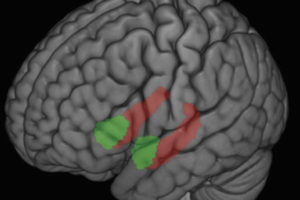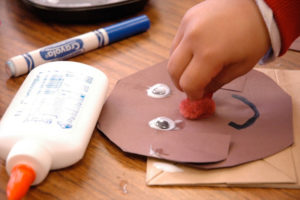Teachers who practice “mindfulness” are better able to reduce their own levels of stress and prevent burnout, according to a new study conducted by the Center for Healthy Minds.
The results of the study, led by Assistant Scientist Lisa Flook, were recently published in the journal Mind, Brain and Education.
Mindfulness, a notion that stems from centuries-old meditative traditions and is now taught in a secular way, is a technique to heighten attention, empathy and other pro-social emotions through an awareness of thoughts, external stimuli, or bodily sensations such as breath.
While teachers play a critical role in nurturing children’s well-being, progress in addressing teacher stress has been elusive. Stress and burnout among teachers is a major concern for school districts nationwide, affecting the quality of education and incurring increased costs in recruiting and sustaining teachers.
For the study, a group of 18 teachers was recruited to take part in a Mindfulness-Based Stress Reduction (MBSR) course, a well-established and well-studied method of mindfulness training. The project team adapted the MBSR training to fit the particular needs and time demands of elementary school teachers. It was among the first efforts to train teachers, in addition to students, in mindfulness techniques and to examine the effects of this training in the classroom.
“We wanted to offer training to teachers in a format that would be engaging and address the concerns that were specifically relevant to their role as teachers,” says Flook, who has advanced degrees in education and psychology and whose primary interest is in exploring strategies to reduce stress and promote well-being in children and adolescents.
The teachers who received the training were randomly assigned and asked to practice a guided meditation at home for at least 15 minutes per day. They also learned to use specific strategies for preventing and dealing with stressors in the classroom, such as “dropping in,” a term to describe the process of bringing attention to the sensations of breath and other physical sensations, thoughts, and emotions for brief periods of time. The training also included caring practices to bring kind awareness to their experiences, especially those that are challenging.
"The most important outcome that we observed is the consistent pattern of results, across a range of self-report and objective measures used in this pilot study, that indicate benefits from practicing mindfulness."
One of the goals of the study was to evaluate outcomes using measures that could be affected by mindfulness training. The researchers found that those who received the mindfulness training displayed reductions in psychological stress, improvements in classroom organization and increases in self-compassion. In comparison, the group that did not receive the training showed signs of increased stress and burnout over the course of the school year. These results provide objective evidence that MBSR techniques are beneficial to teachers.
“The most important outcome that we observed is the consistent pattern of results, across a range of self-report and objective measures used in this pilot study, that indicate benefits from practicing mindfulness,” says Flook, who also leads CHM’s “Kindness Curriculum” study involving 4-year-old preschoolers.
Madison teacher Elizabeth Miller discovered that mindfulness is a meditative technique that does not require “just sitting still and trying to observe your thoughts,” which she said was difficult for her. The course showed her that mindfulness can be practiced anywhere, at any time.
Although Miller had practiced meditation before participating in the study, it had never occurred to her to use some of the mindfulness techniques, such as focusing on the breath, in the classroom. Now Miller uses this tool throughout the day, such as between subject areas or after recess, to refocus her students’ attention, inviting them to pause and take three deep breaths together before beginning math, for example.
“Breath awareness was just one part of the training, but it was something that I was able to consistently put into practice,” says Miller. “Now I spend more time getting students to notice how they’re feeling, physically and emotionally, before reacting to something. I think this act of self-monitoring was the biggest long-term benefit for both students and teachers.”
Next, Flook would like to work on replicating the study’s initial findings through a larger-scale, national project that also connects students.
“We want to explore how the teacher practice can be sustained, and how that affects the students," she says. “Can we train the teachers to also teach mindfulness? What effect does that have on the students?”
Richard Davidson, the study’s senior author and Center founder and chair, added that “in the future, the group will explore the synergistic impact of teacher and student training on a variety of individual and classroom outcomes.”
In addition to Flook and Davidson, authors of the paper include Simon Goldberg, Laura Pinger and Katherine Bonus.






